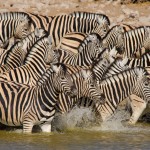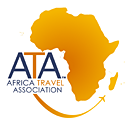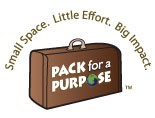Down and Dirty in Africa – Cairo to Cape Town Part 1
Anyone who travels overland through the African continent has to be a little crazy. To do it several times – totally mad. Then again I am from Adelaide, Australia …. Maybe that says something. But to anyone who has ever travelled Africa will understand the old saying “you can take a (wo)man out of Africa, but you can never take Africa out of the (wo)man”. With all its bad press, reputation for danger, death and poverty there is a side to Africa most never see nor experience – the wild diversity of terrains from unforgiving deserts to tropical rainforest to intimidating mountain ranges. The people, languages, dress and customs is a melting pot making this continent one of the most unique places on earth to travel overland.
The 18,000km overland journey from Cairo, Egypt to Cape Town, South Africa is one of the most popular routes for those wanting to cross the continent from North to South through Egypt, Sudan, Ethiopia, Kenya, Uganda, Tanzania, Malawi, Zambia, Botswana, Namibia and South Africa. We were prepared to go for days on end without showers, relieve ourselves in the bush, cook on open fire and sleep under the African stars all for the satisfaction in achieving the epic overland journey – Cairo to Cape Town.
With 5 expedition Land Rovers, 3 Aussies, 5 Kiwis and 1 German we set out on a 4 month expedition from top to bottom of the Africa continent. We were on our way.
We started in Jordan due to its so-called ease in shipping vehicles. Ones definition of ease totally depends on ones threshold; the ship was 10 days late, the paperwork rivalled Mt Kilimanjaro in height; port opening and closing times appeared random – possibly dependent on the weather!
While in Jordan we took the opportunity to explore the Lost City of Petra, the desert of Wadi Rum (Lawrence of Arabia’s hideout) and soak in the salty waters of the Dead Sea. But it was the African continent we were itching to reach.
The adventure started in trying to board the ferry from Aqaba to the port town Nuewiba, Egypt just over the Red Sea. The best way to describe the ferry port is chaotic. There are no signs (not even in Arabic) and no indication of process. The only rule is not to board the ferry until vehicle papers and passports are stamped. A random desk indicating immigration simply by the amount of people pushing and elbowing trying to squeeze passports through a small circular hole in the window manned by a gentleman in official uniform.
The ferry, an old Danish channel ferry, transported us to Egypt but not without a 3 hour delay left sitting on the docks while semi-trailers with turn table trailers expertly reversed onto the ramp and through the seemingly narrow cargo hole. 4 hours later we set foot on the African continent.
Egypt is not really Africa; it is merely positioned on the Continent but is still classified as an Arab nation. Nonetheless Egypt is a warm and welcoming country, the Egyptians are masterful at making you believe you have received a bargain of the century only to walk away and realize that same item costs half the price at home.
Our first challenge was to complete the mountains of paperwork simply to get our vehicles into the country. Egypt has strict rules and regulations; if anyone knows exactly what they are I would love to know! It is not as simple as just having the Carnet de Passage (vehicle passport) stamped, Egyptian customs is like a maze; a local driving permit, local insurance, Egyptian number plates, hundreds of photocopies and a lot of backsheesh (bribes) finally saw the formalities complete and us on our way to the shores of the Red Sea.

The desert is nowhere like anything in the World. In one way it looks like nothing can survive but once you look closer you will see it never sleeps.
Egypt is dry, with the exception of the Nile at the very north near the Delta. The landscape is mostly flat and rocky, a dull sandy colour sweeps the landscape with the occasional brilliant grey rocky outcrop breaking the mundane colour scheme.
Driving through Egypt is a unique experience to say the least. Drivers on their horn during the day, yet at night they drive without head lights although still reaching speeds of 120km per hour! The road system is overall pretty good and not much traffic with the exception of Cairo (which resembles the driving skills of hundreds of thousands of drunk drivers … only they are sober!) Horns, accelerator, brakes are all you need, the odd fist out the window is also a handy driving skill to become accustomed too, not a rude gesture by any means, it merely means I am first.
Travel in Egypt is restricted. There are few roads tourists can travel and most have police escorted convoys. Leaving times are secret – for our “protection” – so secret it is only the day before the convoy leaves exact departure times are known. Our first convoy from Safaga to Luxor departed at 7am, 320kms under police escort with over 100 tourist buses, taxis, and a hand full of independent travellers. Anyone who is not familiar with convoy etiquette quickly becomes accustomed to the chaos; convoy quickly turns into a race between coaches and drivers.
We took the time to visit the key tourist attractions, the Great Pyramids, famous Egyptian museum, vibrant markets of Cairo, very relaxing felucca cruise up the Nile, explored the tombs of the great pharaohs in Valley of the Kings and Queens, spotted hieroglyphics at Karnak and Luxor temples to name a few.
While in Cairo we needed our Sudan and Ethiopian Visas. Not a difficult process, if the paperwork is all in order. The most wonderful thing about the Sudanese Embassy in Cairo is it does not look like an Embassy. The Sudanese have taken a very different approach, there is a sad looking flag out the front of the old, well-worn, un-maintained building, two open entrances taking you into the heart of the Embassy and hub of activity without books to fill, ID to show, no metal detectors, no searches, no passes to apply for. What you face when entering are about 70 people crammed into a small space with a few staff placed in semi-random places.
After completing mountains of paperwork, countless photocopies and several department stamps covering the application forms our visas were approved in less than 24 hours.

Alcohol is banned in Sudan, so before leaving Egypt I enjoyed my last Coopers Pale Ale while sailing on the Nile
After a bit of overload of history it was time to move on. Our next destination; Sudan, here we enter real Africa; as all overland routes are closed we must ship the vehicles on a barge while we take a regular passenger ferry service to the small port town of Wadi Halfa across Lake Nasser.Entering Egypt in your own vehicle is an adventure in itself; however it is nothing on actually trying to leave this ancient world. There are stamps on bits of pieces of paper required from different police departments, mountains of paperwork to complete, ferry tickets to collect, lengthy customs process, police clearance, surrendering number plates and local license, and finally loading the vehicles ……… the maze is thick, process confusing, and everything is done on Egyptian time over many cups of sweet black tea.
Loading the vehicles onto the well-used platform is an artform; 50 well-meaning Egyptians simultaneously yelling directions on how best to load; forward, backward, to the left, to the right …….. it was not long before we stepped in and took control of the loading process.
The vehicles left 1 day before us; normally it takes 3 days for the barge to cross and about 24 hours for the passenger ferry – the Captain assured us although the vehicles left a day later than scheduled he would be in Wadi Halfa before us.
As we were about to step onto the passenger ferry a small local Egyptian politely asked if he could pass …. I swiftly moved aside as he shuffled by. He was carrying a full size household fridge neatly packed in its original box on his back! As we pushed and shoved our way onto the ferry dodging hundreds of sacks of onions, TVs, stereos, boxes of fruit and veg, furniture and of course hundreds of people; we were relieved to finally drop our bags in our cabins.
We woke in the morning to the familiar Middle East call to prayer crackling over the ferry speaker. After a tasty breakfast of beans, flatbread, lentils, fruit and cheese we gathered on deck as we gently sailed past the famous temple of Abu Simbel and into Sudanese territory.
A few hours later we caught our first glimpse of Wadi Halfa; we were relieved to see, in the distance, the cargo barge with our vehicles waiting patiently for our arrival. The Captain was true to his word; arrived before us and guarded the vehicles over night – of course now he was waiting for his generous “backsheesh” we had promised prior to leaving Aswan.
Once again entering a country like Sudan requires mountains of paperwork, stamps, more stamps, and 3 officials in different offices also needing to stamp the stamped paperwork. The vehicles need to be checked, searched for illegal items, and engine and chassis numbers clarified against the Carnets and of course a stamp to say this was done! After a quick search of the vehicles we were finally ready to exit the customs compound.
What people do not see nor hear about Sudan are the kind-hearted, ever willing to assist, smiley faced friendly people. “Welcome to Sudan” echoes everywhere, horns hooting, random people stopping to greet us and kids on the side of the road waving their tiny hands while exhibiting large toothless smiles. We felt nothing but safety and security; a genuine feel local people wanted tourists in their country. Sudan is in a terrible state; but like all war torn countries there are millions of people living a normal life trying to survive in uncertain times; it is these people that make a country.
Northern Sudan is like a breath of fresh air compared to the hustle and bustle of Egypt. The north is desert and we chose to take the off-road route to Khartoum, over 700kms of which 340kms off-road through the Nubian Desert.
The desert is deceptive; the ground looks flat – but it is not; in the distance the sun reflects giving the impression of watering-holes (mirages) but there is nothing but sand; the colours change minute by minute as the sun reflects – one minute the distance is a pale cream colour; 10 minutes later is deep orange; at night the sky comes alive with millions of stars as dozens of shooting stars dart across the sky line. The moon light ignites the sand and even in the middle of the night you think it is twilight. The desert is its own world; with its own rules and speaks a language only a few ever master. It is no wonder travellers often find themselves lost, confused and scared in such a vast hostile nothingness.
With the windows down and sand blowing in our hair we took off into the desert. The rules were simple – drive with your eyes, and look out for each other and if you get lost head for the railway line. We spread out but never completely lost sight of one another with the lead vehicle leading the way. The most wonderful thing about desert crossings are even with 7 vehicles (2 independent vehicles asked to join us) it felt like we were all alone.
It took 3 days (and only four bogging) to reach a brand new tar seal road near the town of Abu Hamed, 300 or so kms from the capital Khartoum. We pumped up the tyres and continued on our way.
We stopped at the ancient pyramids of Meroe, where we camped up for the night behind one of the many imposing sand dunes. The following morning there was no wind, the desert oozed it’s eerie silence when from out of nowhere the first “camel” man arrived, followed by more “camel” men, and “donkey” men and tens of kids on foot. The souvenir shops had come to us and as we unzipped our tents and opened our eyes to see a bright new day we were greeted with a toothless smile and a hearty “welcome to Sudan, come and look at my shop”. Before long over 20 locals had come to greet us and offer to sell everything from jewellery, clay pots, hand-woven mats, old coins and camel rides to the Pyramids.
After rummaging through the souvenirs we departed for a look at the Pyramids. It was not long before the sun was beating down and it was time to make our final 250kms or so to the Capital, Khartoum.
In Khartoum we stayed at the Blue Nile Sailing Club on the banks of the Nile, it dates back to colonial days; the centre piece are the remains of Lord Kitchener’s Gun Boat which was moored in Khartoum; during the great floods the boat was beached and has remained ever since. The Sailing Club is a popular place for well-to-do Sudanese to mull away their weekends cruising in their expensive yachts.
After stocking up on supplies it was time to bid farewell to Sudan and continue to Ethiopia – the Land of Dungeons and Dragons; the place St George fought and won battles with mythical characters, the believed birth place of the Queen of Sheeba; the home of coffee beans and Daschen Beer.
Part 2 to follow …
Article was printed in Overlander 4WD magazine in Australia and Land Rover World, United Kingdom.
For more information email Debs info@africaexpeditionsupport.com or check out www.africaexpeditionsupport.com











Great article… Brings to life the Africa we know and love. Congrats on it being published in the 4×4 mags.
I went overland through six countries and it was amazing. Thanks for following my blog…look forward to more from yours! ~Sherry~
Nice, interesting account of Africa! Waiting for part 2
A great read.